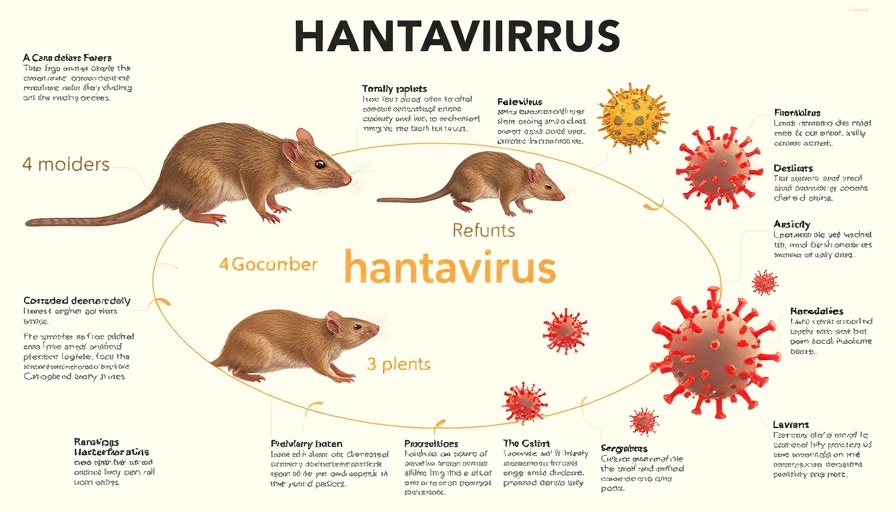
Understanding the Hantavirus Threat
The hantavirus, a deadly virus transmitted through rodents, has recently gained attention following high-profile cases linked to its severity. This emerging disease is not just a health concern but poses significant pandemic potential due to its ability to mimic severe COVID-19 infections, causing alarm amongst healthcare professionals, researchers, and the general public.
Research Reveals Rodent Hosts and Their Geographic Distribution
Virginia Tech's recent study highlights three significant hotspots for hantavirus circulation in wildlife: Virginia, Colorado, and Texas. The research found that 15 rodent species serve as carriers, including six that had not been previously identified. This discovery prompts vital questions about ecological shifts and the zoonotic potential of hantavirus. As researchers unravel the environmental factors influencing the spread of hantavirus among rodents, they are painting a clearer picture of its potential impact on human health.
What We Can Learn from Rodent-Carried Diseases
This research is crucial not only in understanding hantavirus distribution but also in preparing for future outbreaks. By examining blood samples from thousands of rodent species, scientists are collecting vital data that could inform public health strategies and preventative measures. The identification of new rodent species as potential hosts suggests the necessity of monitoring previously overlooked reservoirs, reinforcing the need for public awareness regarding rodent control to mitigate future transmission risks.
Implications for Public Health and Prevention
The revelation that other rodent species may hold higher prevalence rates of hantavirus challenges existing perceptions about its circulation in wildlife. With this new knowledge, public health officials can better predict outbreaks, develop targeted interventions, and potentially prevent significant outbreaks before they occur. Swift action is paramount in ensuring the public remains informed and proactive regarding the hantavirus threat.
Call to Action: Stay Informed and Prepared
In light of these findings, it is crucial to stay informed about hantavirus and its connections to health. Tech professionals, healthcare practitioners, fitness coaches, and entrepreneurs should consider the implications of emerging diseases in our increasingly connected world. Taking steps to educate ourselves and our communities about rodent control and public health strategies will be key in safeguarding against potential outbreaks.
 Add Row
Add Row  Add
Add 




Write A Comment